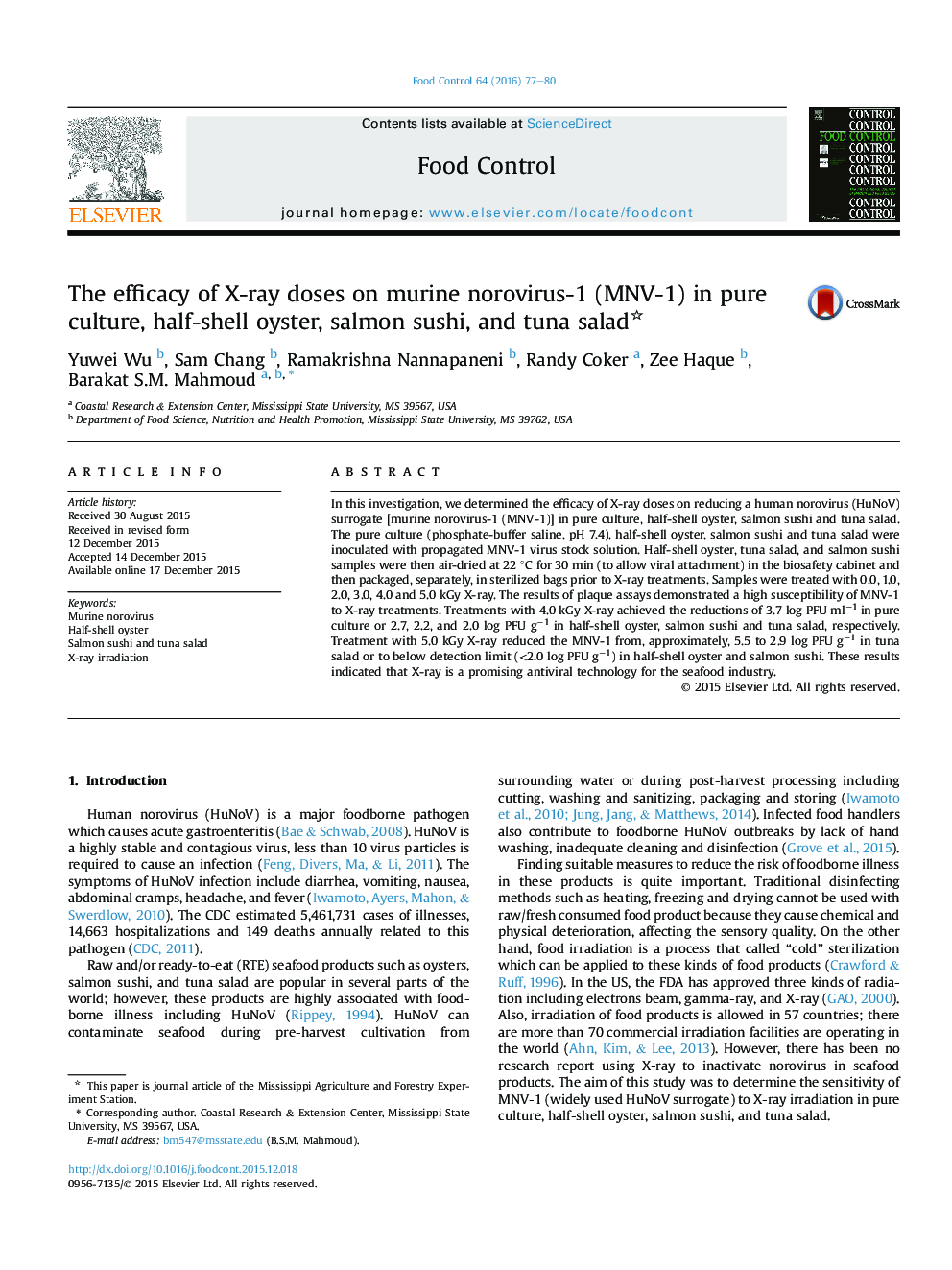| Article ID | Journal | Published Year | Pages | File Type |
|---|---|---|---|---|
| 6390161 | Food Control | 2016 | 4 Pages |
Abstract
In this investigation, we determined the efficacy of X-ray doses on reducing a human norovirus (HuNoV) surrogate [murine norovirus-1 (MNV-1)] in pure culture, half-shell oyster, salmon sushi and tuna salad. The pure culture (phosphate-buffer saline, pH 7.4), half-shell oyster, salmon sushi and tuna salad were inoculated with propagated MNV-1 virus stock solution. Half-shell oyster, tuna salad, and salmon sushi samples were then air-dried at 22 °C for 30 min (to allow viral attachment) in the biosafety cabinet and then packaged, separately, in sterilized bags prior to X-ray treatments. Samples were treated with 0.0, 1.0, 2.0, 3.0, 4.0 and 5.0 kGy X-ray. The results of plaque assays demonstrated a high susceptibility of MNV-1 to X-ray treatments. Treatments with 4.0 kGy X-ray achieved the reductions of 3.7 log PFU mlâ1 in pure culture or 2.7, 2.2, and 2.0 log PFU gâ1 in half-shell oyster, salmon sushi and tuna salad, respectively. Treatment with 5.0 kGy X-ray reduced the MNV-1 from, approximately, 5.5 to 2.9 log PFU gâ1 in tuna salad or to below detection limit (<2.0 log PFU gâ1) in half-shell oyster and salmon sushi. These results indicated that X-ray is a promising antiviral technology for the seafood industry.
Related Topics
Life Sciences
Agricultural and Biological Sciences
Food Science
Authors
Yuwei Wu, Sam Chang, Ramakrishna Nannapaneni, Randy Coker, Zee Haque, Barakat S.M. Mahmoud,
